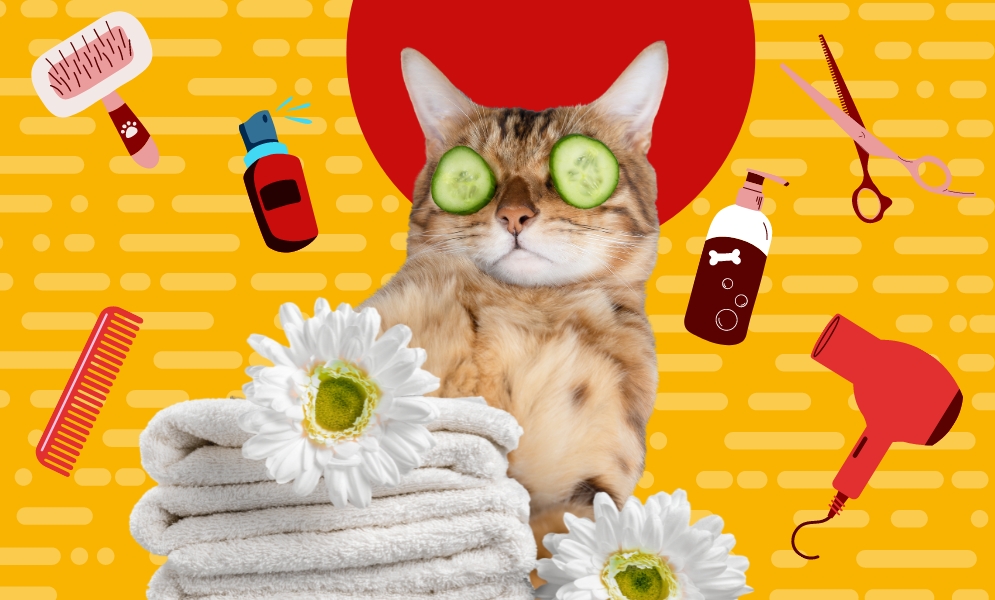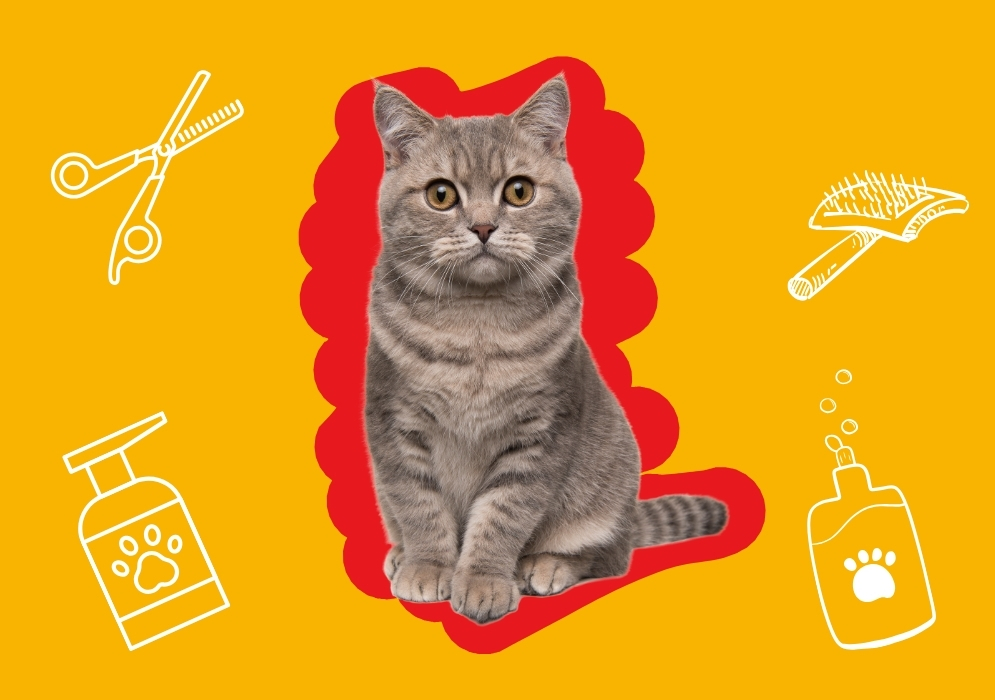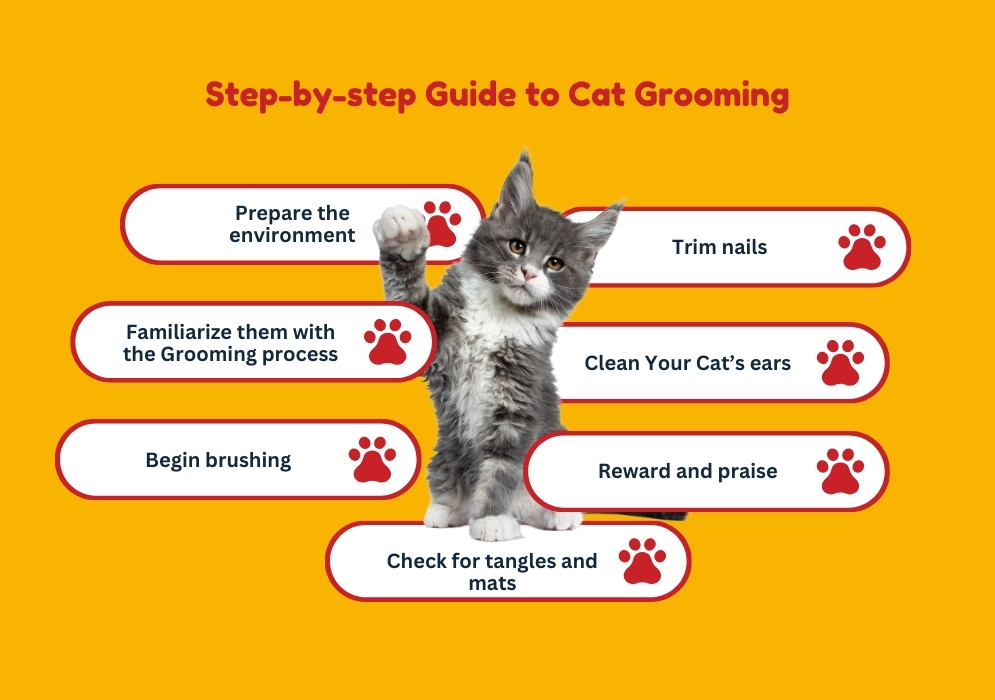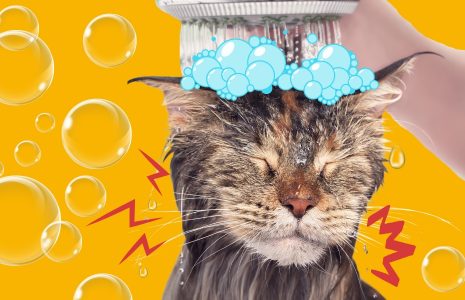Cat Grooming 101: Tips, Tricks, and Expert Advice for a Purr-fectly Pampered Cat


Grooming is a crucial aspect of cat care – it keeps your cat looking and feeling their best and plays an important role in maintaining their overall health and wellbeing. But if you are a first-time cat parent with no experience in grooming a cat, it can feel daunting.
But worry not. If you are looking for tips and advice on cat grooming, you are at the right place. We are here to make the process as smooth and enjoyable as possible for you and your kitty.
In this guide, we’ll share some essential tips, clever tricks, and expert advice on how to groom a cat so they can keep looking and feeling fabulous. So, grab your grooming tools, and let’s dive in!
Why Should You Groom Your Cat Regularly?

You know that grooming is an important part of caring for your cat. But doing it once a month or whenever you have some free time will not cut it.
You must do it regularly if you want your cat to be happy and healthy. There are numerous benefits of regular grooming, which have been explained in detail below:
Reduces hairballs
By removing loose hair, grooming minimizes the risk of your cat ingesting excessive fur, which can lead to uncomfortable and potentially dangerous hairballs.
Promotes healthy skin and coat
Brushing distributes natural oils throughout your cat’s coat, keeping it shiny and healthy. It also stimulates blood circulation, which can improve skin and coat condition.
Prevents matting
Long-haired cats are prone to matting, which can be uncomfortable and even lead to skin irritations. Regular grooming helps detangle and prevent mats from forming.
Reduces shedding
Brushing removes loose hair, which can help minimize shedding around your home.
Early detection of issues
During grooming sessions, you can closely inspect your cat’s skin, coat, and body for potential problems, such as lumps, bumps, or parasites.
Bonding experience
Grooming is an excellent opportunity to strengthen the bond between you and your cat, as it involves gentle handling and quality time together.
So you can see that regular grooming not only keeps your cat looking their best but also contributes to their overall health and happiness.
How Often Should You Groom Your Cat?
One common question that almost all first-time cat parents have is, ‘how often should I groom my cat?’ There is no straightforward answer because the frequency of grooming depends on several factors.
This includes your cat’s coat length, shedding patterns, and individual preferences. But it can be quite troublesome to figure out when to groom your cat, especially if you have adopted them for the first time. So here are some general guidelines.
- Short-haired cats: Brush once or twice weekly to remove loose hair and distribute natural oils.
- Long-haired cats: Brush daily or every other day to prevent matting and excessive shedding.
- Shedding seasons: During periods of increased shedding (typically spring and fall), more frequent grooming may be necessary.
- Older cats: Senior cats may require more frequent grooming as they become less efficient at self-grooming.
Monitoring your cat’s coat condition and adjusting the grooming frequency accordingly is essential. Some cats may require more or less grooming depending on their individual needs.
What Are The Essential Cat Grooming Tools?
Having the right tools can make grooming easier and more effective. Here are some essential items to have in your grooming kit:
Brushes and Combs
A brush is The first and most basic tool to groom your cat at home. Here are some different brushes you should have at home for different purposes.
- Slicker brush: Ideal for removing loose hair and detangling knots.
- Bristle brush: Helps distribute natural oils and remove loose hair.
- Deshedding tool: Effectively removes loose undercoats during shedding seasons.
- Wide-tooth comb: Useful for detangling long hair and removing mats.
- Flea comb: Helps detect and remove fleas and flea dirt.
Ear Cleaners and Nail trimmers
Keeping your cat’s nails trimmed can prevent accidental scratches and furniture damage. There are different types of nail trimmers for cats available in the market, such as electric grinders, pliers-style clippers, guillotine-style clippers, and scissors-style clippers.
If you have no prior experience in trimming a cat’s nail, our advice would be to get scissors-style clippers. This is because these are very easy to use, provide precise cuts, and are less likely to cause injuries.
You must also choose a good-quality, vet-recommended ear cleaner for your cat to remove wax build-up and maintain ear hygiene. If your cat suffers from ear-related issues, you should consult your vet before buying an ear cleaner.
Your vet can suggest specially formulated, medicated ear cleaners to treat specific issues like fungal infections, ear mites, and more.
In addition to the tools and products mentioned here, you should keep cat-friendly wipes, treats, and toys handy. These items will help you to have smoother and more enjoyable grooming sessions with your cat.
Step-by-step Guide to Cat Grooming

Grooming your cat can be a rewarding experience for you and your cat. Here’s a step-by-step guide to ensure a smooth and stress-free grooming session:
Step 1: Prepare the Environment
Here is what you should do to prepare the environment
- Choose a quiet, well-lit area with a non-slip surface.
- Gather all the necessary grooming tools within reach.
- Have treats and toys ready for positive reinforcement.
Step 2: Familiarize Them With the Grooming Process
Start by gently petting and praising your cat to create a calm and positive atmosphere. Then, allow your cat to sniff and investigate the grooming tools to become familiar with them.
Step 3: Begin Brushing
When brushing, you should start with a slicker or bristle brush, working in the direction of your cat’s coat growth. Pay special attention to areas prone to matting, such as the belly, armpits, and behind the ears. You can use a de-shedding tool to remove loose undercoats during shedding seasons.
If you want to know how to groom a long-haired cat, we advice using a wide-toothed comb to remove tangles and knots and thoroughly brush your cat’s coat. Then, follow up with a fine-toothed comb to remove fur and matted and tangled hair. You use mist or detangling spray formulated specifically for long-haired cats.
Step 4: Check for Tangles and Mats
It will help if you use a wide-tooth comb to gently detangle any knots or mats, working from the ends towards the skin. If a mat is too stubborn, seek professional grooming assistance to avoid discomfort or injury.
Step 5: Trim Nails
Gently hold your cat’s paw and use cat-specific nail trimmers to trim the tips of the nails. Avoid cutting too close to the quick (the pink area) to prevent bleeding.
Step 6: Clean Your Cat’s Ears
Use a cat-safe ear cleaner and cotton balls or pads to gently wipe away any visible wax or debris from the outer ear. Keep in mind that you should never insert anything into the ear canal.
Step 7: Reward and Praise
Offer treats, praise, and playtime to reinforce positive behavior throughout the grooming session. Try to always end the session on a positive note, even if it needs to be shortened.
Note that you should only bathe a cat if their coat has become very dirty and matted and feels sticky when touched. Cats don’t really need a lot of baths, and doing it frequently will disrupt the natural oils in their coat.
Their coats will get dry and harsh, causing discomfort and irritation. Always keep in mind your cat’s comfort and safety during grooming sessions.
Grooming a kitten: Dos and Don’ts
Introducing grooming at an early age can help your kitten become accustomed to the process and make future grooming sessions easier. Here are some dos and don’ts to keep in mind when grooming a kitten:
Dos of Grooming a Kitten
- Start early: Begin grooming your kitten as soon as you bring them home to help them get used to the process.
- Keep sessions short: Kittens have short attention spans, so keep grooming sessions brief (5-10 minutes) and positive.
- Use gentle tools: Choose soft brushes and combs specifically designed for kittens to avoid irritating their delicate skin.
- Offer treats and praise: Positive reinforcement with treats and verbal praise can help create a positive association with grooming.
- Introduce nail trimming: Gently touch and hold your kitten’s paws to prepare them for future nail trims.
Don’ts of Grooming a Kitten:
- Don’t force it: If your kitten becomes overly stressed or resistant, end the session and try again later.
- Don’t use scissors: Avoid using scissors to trim mats or tangles, as you may accidentally cut your kitten’s skin.
- Don’t bathe too often: Kittens generally don’t need frequent bathing, as it can dry out their skin and coat.
- Don’t neglect grooming: Regular grooming from an early age helps prevent matting and hairballs.
- Don’t punish: Never punish or scold your kitten during grooming sessions, as it can create a negative association.
Remember, patience and positive reinforcement are key when grooming a kitten. With time and consistency, they will learn to enjoy and even look forward to their grooming sessions.
Common Cat Grooming Mistakes to Avoid
Grooming your cat may seem straightforward, but some common mistakes can lead to discomfort, stress, or even harm to your cat. Here are some pitfalls to avoid:
- Using the wrong tools: Using inappropriate brushes, combs, or trimmers can cause discomfort, breakage, or even injury to your cat’s skin and coat. Always use high-quality, cat-specific grooming tools.
- Forcing grooming sessions: If your cat becomes overly stressed or resistant during grooming, it’s best to end the session and try again later. Forcing a grooming session can create negative associations and make future sessions more difficult.
- Neglecting matted areas: Attempting to brush or cut through severely matted areas can be painful for your cat and may cause skin irritation or injury. Seek professional assistance for severe matting.
- Cutting nails too short: Cutting your cat’s nails too close to the quick (the pink area) can cause bleeding and discomfort. Always trim cautiously and avoid cutting into the quick.
- Bathing too frequently: Overbathing can strip your cat’s coat of its natural oils, leading to dryness and irritation. Bathe only when necessary, and use a gentle, cat-safe shampoo and conditioner.
- Ignoring signs of discomfort: If your cat shows signs of discomfort, such as excessive meowing, hissing, or trying to escape, it’s important to stop and address their concerns before continuing.
- Neglecting grooming altogether: Failing to groom your cat regularly can lead to matting, hairballs, and other health issues.
How Much Does Cat Grooming Cost?
The cost of professional cat grooming can vary depending on several factors, including your location, the groomer’s experience, and the services required. Here’s a general breakdown of what you can expect to pay:
- Basic grooming package: This typically includes bathing, brushing, nail trimming, ear cleaning, and sanitary trim (trimming the fur around the rear and belly). The cost can range from $30 to $70.
- Full grooming service: Along with the usual services, a full cat grooming package also includes haircut and styling, de-matting, flea and tick treatment. The cost can range from $60 to $150 or more, depending on the complexity of the grooming required. For instance, if you have a long-haired cat or your cat has never been groomed before, it may cost more.
- Mobile grooming service: Some groomers offer mobile services, where they come to your home to groom your cat. This convenience usually comes with an increased fee amount ranging from $60 to $220.
It’s important to note that prices can vary significantly based on your location and the groomer’s reputation and experience. However, some groomers may offer discounts for multiple pets or frequent grooming visits. So, do thorough research when looking for a professional groomer for your cat.
If you’re on a tight budget, consider learning how to groom your cat at home. While it may require an initial investment in grooming tools, it can save you money in the long run. However, for complex grooming needs or for cats who are difficult to handle, seeking professional assistance may be the safer and more efficient option.









Leave A Comment